Q&A: Healthy gums, healthy heart; what’s the connection?
Powered by WPeMatico
Powered by WPeMatico

Are you an
expecting Mom? While the joy of impending motherhood is certainly exciting,
there’s important information to be aware of as you embark on this incredible journey.
Preeclampsia is a syndrome that manifests during pregnancy, characterised by
elevated blood pressure and signs of organ damage, typically affecting the
heart, liver, and kidneys. This condition is usually identified after the 20th
week of pregnancy and can impact both the expectant mother and the developing
foetus.
Preeclampsia can
be tricky to detect, and one should be extra cautious of the symptoms and
should not ignore even a small sign of it.
Talking openly with the doctor will help
manage the condition positively to ensure maximum protection for the baby and mother,
says Dr Prathima Reddy, Director & Lead Consultant, Department of
Obstetrics and Gynaecology, SPARSH Hospital, Bangalore.
Signs
and Symptoms:
Risk
Factors:
Complications:
Regular
Prenatal Check-ups:
Lifestyle
Modifications:
Know
When to Seek Help:
The
Power of Support:
Have
open conversations with your healthcare team, partner, and family regarding
your concerns and the experiences you’ve encountered in this matter.
When
a woman is aware of preeclampsia, she is empowered to take proactive steps to
ensure the safe and healthy birth of her baby. In the exciting journey of
motherhood, the path ahead is one of upward progress.
Knowledge is key, so stay
informed, remain vigilant, implement lifestyle adjustments, and approach
pregnancy with confidence.
Disclaimer: The views expressed in this article are of the author and not of Medical Dialogues. The Editorial/Content team of Medical Dialogues has not contributed to the writing/editing/packaging of this article.
Powered by WPeMatico
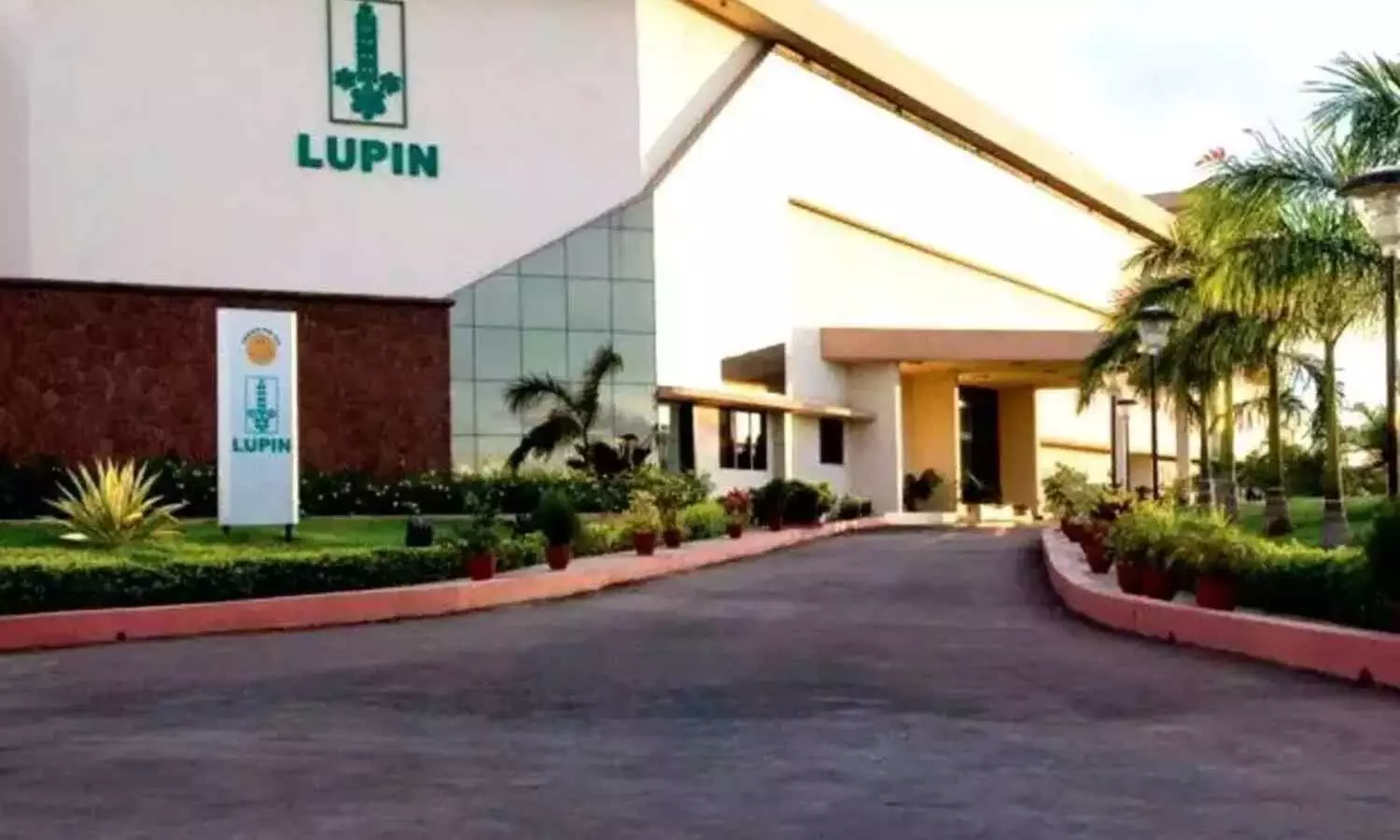
Mumbai: Global pharma major Lupin Limited has announced
the launch of Ganirelix Acetate Injection, 250 mcg/0.5 mL, Single-Dose Prefilled Syringe, after having
received an approval from the United States Food and Drug Administration (U.S. FDA).
Powered by WPeMatico
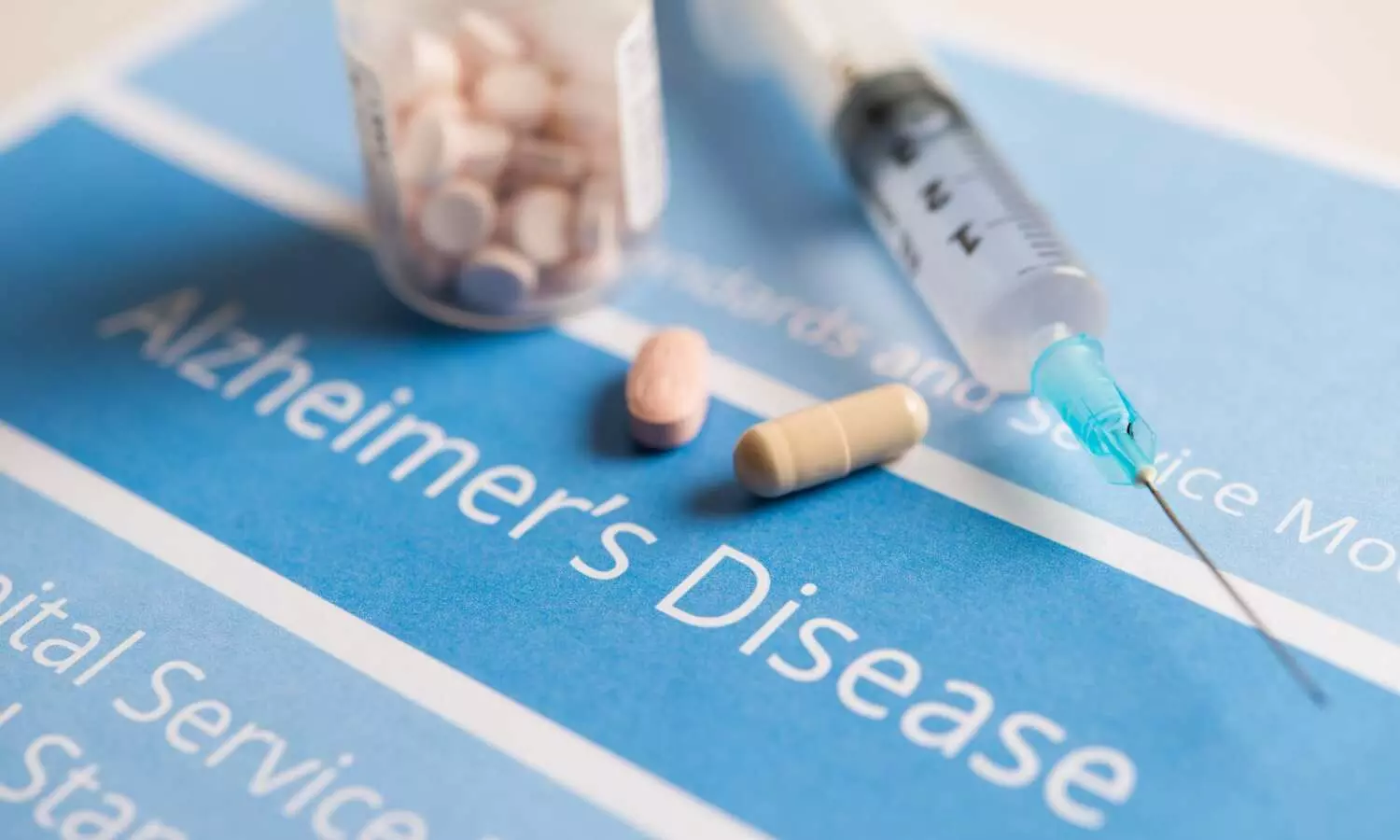
In a groundbreaking revelation, scientists have shed light
on the possibility of iatrogenic Alzheimer’s disease (AD), a form acquired
through medical procedures. Alzheimer’s, known for amyloid-beta (Aβ) deposition
and neurofibrillary tangles, has long been considered a complex interplay of
genetic and environmental factors. However, a recent study underscores the
environmental acquisition of AD, prompting a reevaluation of preventive
measures in medical settings.
The study results were published in the journal Nature Medicine.
The study, which builds upon previous findings on the
transmission of Aβ pathology, focused on individuals who, as children, received
cadaver-derived pituitary growth hormone (c-hGH) contaminated with both
Creutzfeldt–Jakob disease (CJD) prions and Aβ seeds. While prior reports
detailed Aβ transmission in iatrogenic Creutzfeldt–Jakob disease (iCJD) cases,
the latest research delves into cases where recipients not only survived iCJD
but also later developed dementia and biomarker changes consistent with AD.
This discovery challenges the conventional understanding of
AD as primarily a result of genetic predisposition. Instead, it introduces the
concept of iatrogenic forms of the disease, emphasizing the need for a nuanced
approach in addressing AD’s various manifestations. The study suggests that AD,
like Creutzfeldt–Jakob disease, may have acquired forms resulting from
environmental exposure during medical interventions.
While iatrogenic AD is acknowledged as rare, the
implications are far-reaching. The study stresses the importance of revisiting
and reinforcing preventive measures to minimize accidental transmissions
through medical and surgical procedures. The recognition of iatrogenic AD
highlights the potential risks associated with certain medical interventions,
necessitating a critical examination of safety protocols in healthcare
settings.
Importantly, the study clarifies that there is currently no
evidence suggesting the transmission of Aβ between individuals in daily life
activities. The risk is primarily associated with specific medical treatments,
particularly those involving growth hormone derived from cadavers.
Furthermore, the research warns of potential challenges in
therapeutic strategies targeting Aβ assemblies. As Aβ assemblies exhibit
structural diversity comparable to conventional prions, there’s a possibility
that therapeutic interventions may inadvertently select minor components,
leading to the development of resistance. This cautionary note underscores the
delicate balance required in developing effective and safe treatments for AD.
In conclusion, the revelation of iatrogenic Alzheimer’s
introduces a new dimension to the understanding of the disease. As the
scientific community grapples with these findings, the imperative for stringent
preventive measures and the careful consideration of therapeutic strategies
becomes paramount in the ongoing battle against Alzheimer’s disease.
Further reading: Banerjee, G., Farmer, S.F., Hyare, H. et al. Iatrogenic Alzheimer’s disease in recipients of cadaveric pituitary-derived growth hormone. Nat Med (2024). https://doi.org/10.1038/s41591-023-02729-2
Powered by WPeMatico
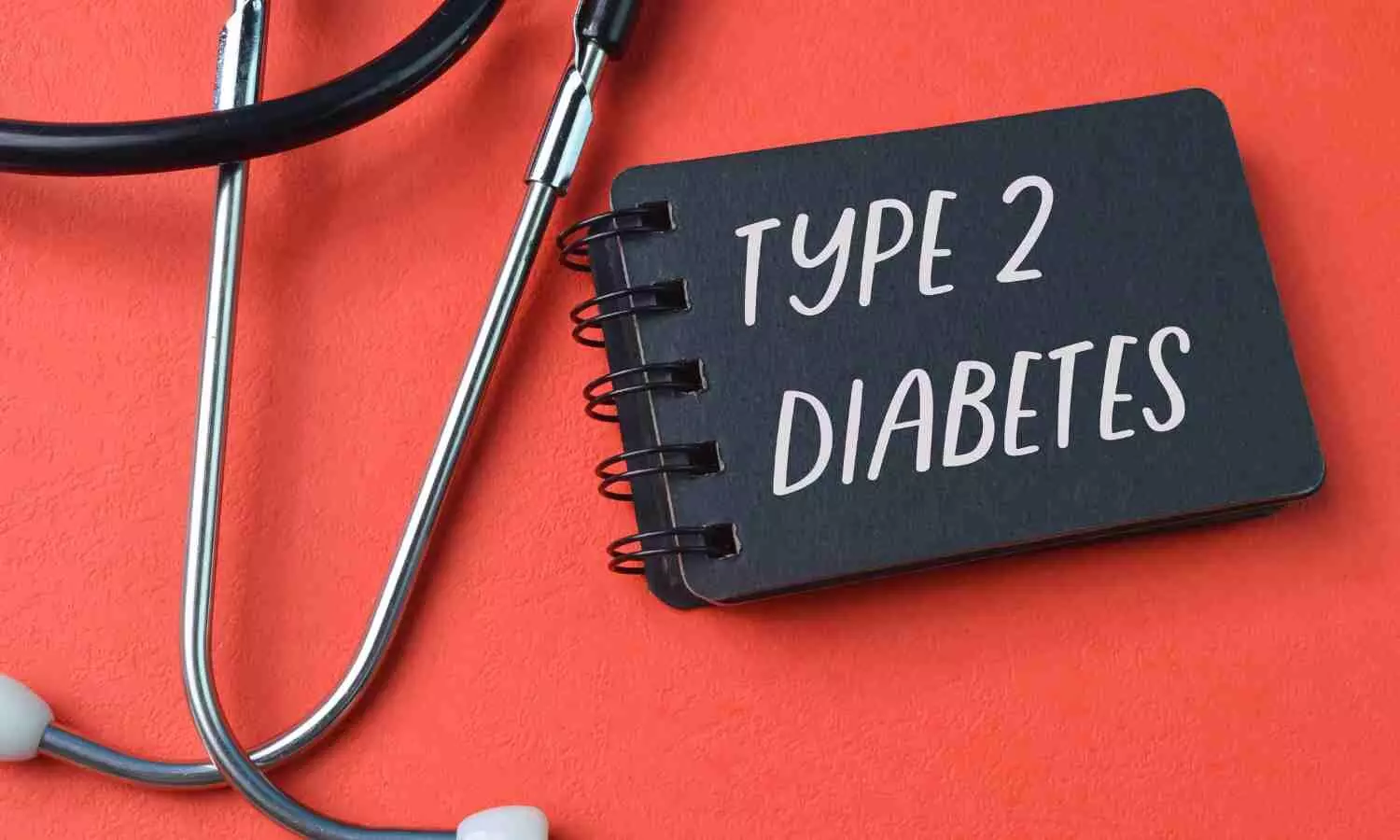
Researchers from Osaka University have found in a new study that Gargling away bad bacteria with antiseptic mouthwash may improve blood sugar in diabetes patients.
More than bad breath, there is growing evidence that ongoing inflammation in the mouth, like with gum disease, is associated with serious diseases such as Alzheimer’s disease or type 2 diabetes.
In a study published this month in Scientific Reports, the researchers reported that when people with type 2 diabetes gargled with an antiseptic mouthwash, the numbers of periodontitis-related bacteria decreased. Excitingly, some patients with reduced bacteria also achieved much better control of their blood sugar, hinting at promising future clinical applications.
“There are three highly virulent bacterial species that are linked to periodontitis, or diseases of the tissues surrounding the teeth,” explains lead author of the study Saaya Matayoshi. “We decided to see if we could reduce these three species-Porphyromonas gingivalis, Treponema denticola, and Tannerella forsythia-in patients with type 2 diabetes using a mouthwash containing the antiseptic chlorhexidine gluconate.”
To do this, the researchers took monthly or bimonthly saliva and blood samples from 173 patients over an entire year. With the saliva, the researchers noted the presence or absence of the three bacterial species, and with the blood samples, they measured HbA1c levels as a marker of blood-sugar control. Importantly, for the first 6 months of the study, the patients gargled with water, whereas for the second 6 months they gargled with the antiseptic mouthwash. In this way, the research team could see whether gargling itself was effective for reducing bacteria, or whether mouthwash was more effective.
“We were unsurprised to see that gargling with water had no effects on bacterial species or HbA1c levels,” explains Kazuhiko Nakano, senior author of the study. “However, there was an overall reduction in bacterial species when the patients switched to mouthwash, as long as they were gargling at least twice a day.”
The researchers also found that, although there were no overall changes in HbA1c levels when patients gargled with the antiseptic mouthwash, there appeared to be large variations in individual responses. For example, when they split the group into younger and older patients, younger patients had greater reductions in bacterial species and significantly better blood-sugar control with the mouthwash compared with water.
Given that poor oral health is linked to serious disease, simple methods to improve oral hygiene have important ramifications. If researchers can identify patients who are likely to respond well to antiseptic mouthwash, this easy-to-use treatment may improve the lives of people with periodontitis-linked diseases such as diabetes, dementia, cardiovascular disease, and respiratory tract infections.
Reference:
Matayoshi, S., Tojo, F., Suehiro, Y. et al. Effects of mouthwash on periodontal pathogens and glycemic control in patients with type 2 diabetes mellitus. Sci Rep 14, 2777 (2024). https://doi.org/10.1038/s41598-024-53213-x.
Powered by WPeMatico

The perioperative period poses significant challenges for patients undergoing high-risk surgery, often leading to postoperative complications. Hypoalbuminemia, or low serum albumin levels, is a known risk factor for such complications. To address this, researchers conducted a clinical trial to investigate the efficacy of goal-directed albumin substitution in reducing postoperative complications. Hypoalbuminemia is associated with increased risk of postoperative complications, prompting consideration for albumin substitution during surgery.
A recent study published in the journal Annals Of Surgery by Stefan J and colleagues. This study aimed to determine whether maintaining serum albumin levels above 30 g/L through goal-directed albumin substitution could mitigate these risks in high-risk surgical patients.
A single-center, randomized, controlled trial was conducted on adult patients with ASA physical status classification 3 to 4 or undergoing high-risk surgery.
Patients with serum albumin levels dropping below 30 g/L were randomly assigned to receive goal-directed albumin substitution or standard care. The primary outcome was the incidence of postoperative complications classified as Clavien-Dindo Classification ≥2 in at least one of nine domains until postoperative day 15.
The key findings of the study were:
2509 patients were included, with 600 (23.9%) developing serum albumin concentrations <30 g/L.
Human albumin (60 g) was substituted to 99.7% of patients in the intervention group and to 18.0% in the standard care group.
Complications classified as Clavien-Dindo Classification ≥2 occurred in 84.7% of patients in the intervention group and 87.3% in the standard treatment group. The risk difference was -2.7% (95% CI, -8.3% to 2.9%).
The study concluded that maintaining serum albumin concentration >30 g/L perioperatively cannot be generally recommended in high-risk noncardiac surgery patients. Despite goal-directed albumin substitution, there was no significant reduction in postoperative complications. This suggests that other factors may contribute more significantly to postoperative outcomes in this patient population.
Reference:
Schaller, S. J., Fuest, K., Ulm, B., Schmid, S., Bubb, C. A. B., Eckstein, H.-H., von Eisenhart-Rothe, R., Friess, H., Kirchhoff, C., Luppa, P., Blobner, M., & Jungwirth, B. Goal-directed perioperative albumin substitution versus standard of care to reduce postoperative complications: A randomized clinical trial (SuperAdd trial). Annals of Surgery,2024;279(3):402–409. https://doi.org/10.1097/sla.0000000000006030
Powered by WPeMatico
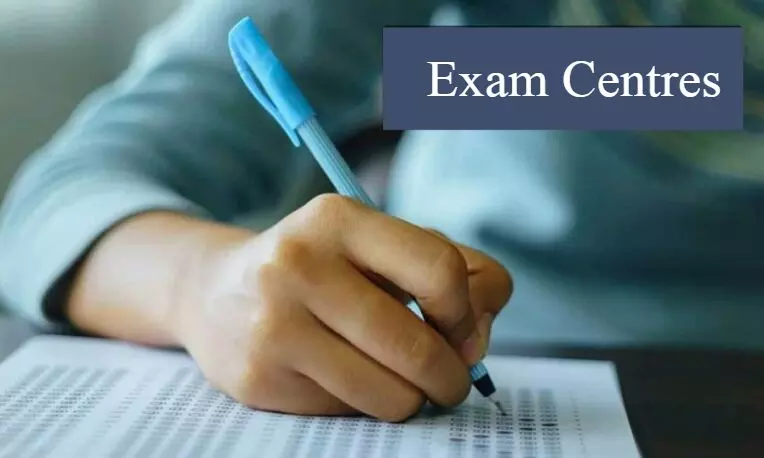
New Delhi: The registration process for NEET 2024 is currently underway. Along with the application form, the National Testing Agency (NTA) released the information bulletin, listing down the exam cities along with city codes where the NEET 2024 will be conducted.
This year’s NEET will not be conducted outside the country, and natiowide the exam cities have been increased from 499 from last year to 554 this year. Last year, the NTA conducted NEET 2023 in 14 exam centres abroad for admission to MBBS, BDS and other UG courses in Indian medical colleges.
In the NEET 2024 information bulletin, the details of the NEET exam fees for centres outside India have also been removed.
It has been mentioned in the NEET 2024 bulletin that while filling up the Online Application Form, candidates should select four Convenient Cities from list as their Choice of Cities for the exam Centre in order of their priority.
“Choice of Centre Cities will be limited to the State of Permanent Address or State of Present Address only. For convenience, the candidates may select their own city or neighbouring cities in their State of Residence only and not for far away cities in other States. NTA will not be responsible for any inconvenience due to the incorrect selection of cities by the candidates. In case, the number of candidates opting for a city is less than a certain minimum, the NTA reserves the right to merge one, two, or more cities,” it says.
“In case, the number of candidates opting for a city as centre with a regional language is less than a certain minimum, candidates may be allotted Centre in another city irrespective of the city opted by the candidates for appearing in the examination. Though every effort will be made to allot a Centre in one of the cities selected by the candidate, the NTA reserves the right to allot a centre in a city other than the candidate’s choice. Allotment of Centres will be done mostly in one of the preferred cities of the candidates and there will be no human intervention,” the bulletin adds.
All effort will be made by NTA to consider the comfort and convenience of candidates, including PwBD Candidates while allotting Centres, the NTA further said.
Readiness for filling up Application Form
Before submitting of application form, make the following preparations:
i. The information to be filled in the Online Application Form such as names of Father/Mother and Candidate with correct spellings/ Class 12 Admit Card with Photograph/Election Card (EPIC No.)/Passport number/Ration Card Number/ Bank Account Number/Other valid Govt. Identity Card Number, Date of Birth, Address, Mobile Number, email id, etc. may be kept ready. Candidates are advised to check the “Replica of Application Form” as given in (Appendix-XXI), before the actual filling of the Application.
ii. The candidates need to provide any one of the following identity details given below:
|
Category of Candidates |
Types of permissible IDs |
|
Indian Nationals of all States |
Class 12 Admit Card, Election Card (EPIC No.), Ration Card, Bank Account Passbook with Photograph, Passport Number or Number of any other Photo Identity Card issued by Government. |
|
NRIs |
Passport Number |
|
Foreign Nationals/ OCI |
Passport Number/ Citizenship Certificate Number |
iii. Candidates have to scan images of the following in JPG /PDF format only, for uploading the same as part of the submission of his/her online application:
➢ Latest Passport size Photograph in JPG format (size: 10 kb to 200 kb)
➢ Post Card size photograph (4” X6”) in JPG format (Size: 10 kb – 200 kb)
➢ Signature in JPG format (size: 4 kb to 30 kb)
➢ Left and Right hand Fingers and Thumb impressions (size:10 kb to 200 kb)
➢ PwBD certificate in PDF format (file size: 50 kb to 300 kb)
➢ Citizenship Certificate/ Embassy Certificate or any Documentary proof of Citizenship certificate in PDF format (file size: 50 kb to 300 kb)
Instructions for completing the Online Application Form
The candidate, before submitting the application form online, must ensure his eligibility to appear in the test. The candidate is required to go through the Information Bulletin carefully and be clear about all requirements with regard to the submission of the Application Form.
The Candidate should fill in complete correspondence and permanent address with the pin code, e-mail address, and mobile number (own or Parents/Guardian only) for future correspondence.
Candidates must ensure that mobile numbers and e-mail ID filled in the online Application Form are their own or Parents/Guardian only as NTA will communicate through SMS or e¬mail on the given mobile number and e-mail ID.
Candidate should not give the postal address, contact number/mobile number, and e-mail ID of Coaching Centres in their Online Application Form.
Those Candidates who have passed should fill Code [02 to 07] against the column provided for in case of Qualifying Examination
Candidates appearing in Class 12 in 2024 should select a qualifying code as 01.
The Application Form other than the one filled in online mode will not be accepted. The Candidates are not required to send the Confirmation Page of the Online Application Form or any other document to the NTA. However, the candidates are advised to preserve at least four copies of the Confirmation Page along with the proof of fee paid for future reference.
Candidates from UT of J&K and Ladakh are required to submit an online Self Declaration for seats under 15% All India Quota.
NOTE:
i. Request for change in any particulars in the online Application shall not be entertained under any circumstances.
ii. Incomplete Applications shall be summarily rejected.
iii. If a candidate submits more than one Application Form, his candidature will be cancelled.
iv. If during any stage of examination, any doubt arises that a candidate has filled in multiple forms or impersonated or not provided genuine information or given fake or false, information or the likes such a candidate can be asked to give additional proof of his identity at any point of time.
v. If at any stage, including after declaration of result, it is found that the candidate has submitted duplicate forms or has been involved in any form of impersonation or fabricated facts, such candidate shall be liable for severe penalty including being debarred from taking the NTA examination for a period of three years. Such candidates shall also be liable for suitable criminal action under relevant laws of the country.
vi. Online Transaction Password (OTP) generated on the NEET (UG) – 2024 website while registering/submitting the form will be valid for 15 minutes only. After the lapse of this period, candidates need to click on the link “RESEND OTP” to generate a new OTP.
Step 1: Registration Page
Registration
A candidate can apply for the NEET (UG) – 2024 only online by logging on to the official website.
(i) Candidate’s Name/ Mother’s Name/ Father’s Name as given in the Secondary School Examination or equivalent Board/ University Certificate in capital letters
(ii) Date of Birth in dd/mm/yyyy format as recorded in Secondary School Examination or equivalent Board/ University certificate.
(iii) Identification Type: Candidates need to provide any one of the following identity details given below:
|
Category of Candidates |
Types of permissible IDs |
|
Indian Nationals of all States/ UTs |
Class 12 Admit Card with Photograph, School ID Card No, Election Card (EPIC No.), Ration Card, Bank Account Passbook with Photograph, Passport Number or Number of any other Photo Identity Card issued by Government. |
|
NRIs |
Passport Number |
|
Foreign Nationals/ OCI |
Passport Number/ Citizenship Certificate Number |
(iv) Mobile Number and e-mail Address: Candidates must provide their own or Parents/Guardian Mobile Number and e-mail address only.
(v) Provide complete postal address with PIN Code (Correspondence and permanent address) for further correspondence. PIN code of Correspondence, as well as a permanent address, should be given in the space provided for this purpose.
Step 2: Application
Fill in the complete Application Form
The application particulars entered in Step-I can be edited before the final submission of the Application Form except for Mobile No. and Email address, which may not be changed after Step-I.
Category: General, General-EWS, SC, ST & OBC-NCL are available in the drop-down list under the Category option. No Caste Certificate is to be uploaded in the Online Application Form of NEET (UG) – 2024, necessary document (s) related to Caste / Community will be verified at the Counselling by concerned Central/State Counselling Authority.
• Other Backward Classes (OBC-NCL)- Non-Creamy Layer as per the Central List of Other Backward Classes available on National Commission for Backward Classes (NCBC), Government of India website (www.ncbc.nic.in). Thus, the candidates falling in this list may mention OBC-NCL in the Category Column. State list OBC-NCL Candidates who are not in OBC-NCL (Central List) must choose General.
• Economically Weaker Section (EWS) – As per the OM No. 20013/01/2018-BC-II dated January 17, 2019, issued by the Ministry of Social Justice and Empowerment and the OM No. 12-4/2019-U1 dated 17.01.2019 as well as the Letters No 35-2/2019- T.S.I dated 21.01.2019, 01.02.2019, 04.02.2019, and 15.02.2019 of the MHRD Department of Higher Education (now known as Ministry of Education) regarding the implementation of reservation for Economically Weaker Sections (EWS) for admission in Central Educational Institutions.
Nationality: Indian Nationals, Non-Resident Indians (NRIs), Overseas Citizens of India (OCI) & Foreign Nationals are eligible to appear in NEET (UG) – 2024.
PwBD Status: “PwBD” means Person with Benchmark Disabilities in accordance with the
provisions of the Rights of Persons with Disability Act, 2016 and as per MCI Regulations dated May 13, 2019 (Appendix-VII), if claiming the relaxation under the PwBD category.
Choice of Examination Cities: The candidate should select any four cities of their choice for examination of NEET (UG) – 2024 given in Appendix-VI. Allotment of Centre is made by computer and there is no human intervention.
Medium of Question Paper:
• Candidates opting for English would be provided Test Booklet in English only.
• Candidates opting for Hindi/Regional Language would be provided Bilingual Test Booklet i.e. in Hindi/Regional Language and in English. In case of any ambiguity in the translation of any of the questions, its English version shall be treated as final.
Academic Details (Class 10, 11 & 12): The candidate has to fill in the complete academic details of the 10, 11 & 12/Qualifying Examination. Candidates who passed should fill Code [02 to 07] against the column provided for Qualifying Examination. Candidates appearing in Class 12 in 2024 should select a qualifying code as 01.
Note:
• Only one application should be submitted by a candidate.
• Once finally submitted, particulars in certain specific fields may be changed only during the correction window. After that, no communication in this regard would be entertained.
• Registration will be treated as complete only if the fee has been transacted successfully, else the form will be cancelled.
• Candidates are not required to send/ submit a hard copy of the Confirmation Page to the NTA office. However, the candidates are advised to retain the hard copy of the Confirmation Page, and a proof of fee submitted for future need.
• Candidates must note that mere deduction of fee from the bank account is not proof of fee payment. The payment should be supported by an updated fee. The generation of the Confirmation page is proof of successful submission of the Application Form.
• The details filled by the candidate like candidate category, phone number, and email, etc. in NEET (UG) – 2024 application will be used for the purpose of all India quota seats counselling. No request for change in candidate category at the time of all India quota seats counselling will be entertained by the counselling authority designated by the Central Government.
Note: Due to the COVID outbreak, no examinations were conducted for 2021 batch of Class 10 (Tamil Nadu State Board). Accordingly no marks were given in the marksheet and ‘pass’ is printed in all subjects with a disclaimer – “As per G.O. (Ms) No. 48, School Education (G.E.) department dated: 25.02.2021, all candidates who studied SSLC in the academic year 2020-21 are declared passed.”
While filling up of the online Application Form of NEET (UG) – 2024, when the candidate selects ‘Passing year’ as 2021 with ‘School Board’ as Tamil Nadu State Board of School Examination (Sec.), the Result Mode field will be disabled and the associated fields for Marks/CGPA will be invisible for Tamil Nadu State Board candidates who have passed their Class 10 in year 2021.
Candidate’s Photograph, Signature, and Thumb Impression
Candidate’s Photograph: to be uploaded in JPG format
➢ Passport size Photograph (size: 10 kb to 200 kb)
➢ Post Card size photograph (4”X6”) (Size: 10 kb to 200 kb)
• The photographs must be taken on or after 01.01.2024 preferably indicating clearly the name of the candidate along with the date of taking the photograph. Photographs should not be with cap or goggles. The focus needs to be on the face (80% face coverage, ears clearly visible, white background)
• Spectacles are allowed only if being used regularly.
• Polaroid and Computer-generated photos are not acceptable.
• Applications not complying with these instructions or with unclear photographs are liable to be rejected.
• Application without photographs shall be rejected.
• The photographs need not be attested. Candidates are advised to keep 6 to 8 passport size and 4 to 6 Post Card size (4”X6”) colour photographs with white backgrounds.
• Candidates may note that if the photographs uploaded are found to be fabricated i.e. de¬shaped or seem to be hand-made or computer made, the application of the candidate will be rejected and the same would be considered as using Unfair Means and the candidate would be dealt with accordingly.
• In case someone else’s photographs have been uploaded, the candidature shall be cancelled and the case will be considered as an Unfair Means Case. Criminal action as per laws of the land shall also be initiated.
Note: Same Passport size and Post Card size photographs are to be used for uploading with Online Application Form and for pasting on Attendance Sheet at the Examination Centre / Counselling / Admission. Candidates are reminded to keep 6 to 8 passport size and 4 to 6 Post Card size (4”X6”) colour photographs with white background.
Candidate’s Signature: to be uploaded in JPG format
• The candidate should put his full signature in running handwriting [not in the capital letter] on white paper with a Black Ink pen and scan for uploading.
• File size must be between 4 kb to 30 kb.
• The unsigned Online Application Forms will be rejected.
• In case someone else’s signature has been uploaded, the candidature shall be cancelled and the case will be considered as an Unfair Means Case. Criminal action as per laws of the land shall also be initiated.
Candidate’s Left and Right hand Fingers and Thumb impressions: to be uploaded in JPG format
• The candidate should put Left and Right hand Fingers and Thumb impressions as per the Template provided (Appendix-XX)
• File size must be between 10 kb to 200 kb.
Further, unclear Left and Right hand fingers and thumb Impressions in Online Application Forms will also be rejected.
Step 3: Fee payment
After completing Step 3 of the online Application Form, candidates may remit the examination fee by choosing the following options:
• Select Debit/Credit Card/Net-banking/UPI (Service/Processing charges per transaction & GST (as applicable) to be paid by the candidate wherever applicable) and complete the steps as instructed.
• Print the Confirmation Page after completion of Step 3 i.e. payment through Debit/Credit card/ Net-banking/UPI through State Bank of India/Canara Bank/HDFC Bank/ICICI Bank.
• If a candidate fails to complete all the steps upto Step 3, the final submission of the Online Application will remain incomplete and unsuccessful.
• Generation of Confirmation Page confirms final submission of Application Form. If Confirmation Page has not been generated, this means that Application Form has not been submitted successfully.
Note: In case, the fee payment status is not ‘OK’ the candidates are advised:
• If the fee is paid through a credit/debit card and the status is not OK, it means the transaction is cancelled. Therefore, such candidates have to pay the fee once again and ensure the OK fee status.
• For a cancelled transaction, the amount deducted (if any) in the process of a failed transaction, may automatically be refunded to the concerned Candidate through the same Bank / Payment Gateway / Payment mode through which the transaction was made.
• In case the Confirmation Page is not generated after payment of the prescribed Fee, then the candidate should approach the concerned Bank/Payment Gateway integrator (in the helpline number and email given in Appendix-XIX of the Information Bulletin), for ensuring the successful payment.
In spite of the above, if a successful transaction is not reflected on the Portal, the candidate may contact NTA Helpline. If the payment issue is still not resolved, the candidate may pay a second time.
However, any duplicate payment received from the candidate by NTA in the course of said transactions will be refunded through the same payment mode through which the duplicate payment is received, after fee reconciliation by NTA.
Powered by WPeMatico

A recent study utilized data from the National Health and Nutrition Examination Survey (NHANES) database and explored the potential correlation between dietary sugar intake and depression risk among adults in the United States. The findings of this study were published in the recent edition of BMC Psychiatry journal.
In a stride to address the inconsistency in previous findings regarding this relationship between sugar consumption and depression, the research team led by Lu Zhang analyzed data from a total of 18,439 adults aged 20 years and above. This extensive study spanned from 2011 to 2018 and majorly assessed the depressive symptoms using the nine-item version of the Patient Health Questionnaire (PHQ-9) and adjusted for various demographic and health-related factors such as age, sex, race/ethnicity, socioeconomic status, lifestyle habits and medical history.
The results of the study revealed a significant association between dietary sugar intake and depression risk. The study also found that for every 100 gram per day increase in dietary sugar intake, there was a 28% higher prevalence of depression among the participants. The findings were statistically significant with a confidence interval of 95%.
These findings suggest that dietary sugar intake may play a pivotal role in the development or exacerbation of depressive symptoms among adults. While previous studies have showed inconsistent results on this topic, this large-scale analysis provides compelling evidence for a positive association between sugar consumption and depression. Further research is imperative to better understand the mechanisms underlying this association and to explore potential interventions or dietary guidelines that could help reduce the risk of depression linked with high sugar consumption.
Source:
Zhang, L., Sun, H., Liu, Z., Yang, J., & Liu, Y. (2024). Association between dietary sugar intake and depression in US adults: a cross-sectional study using data from the National Health and Nutrition Examination Survey 2011–2018. BMC Psychiatry, 24(1), 1–10. https://doi.org/10.1186/s12888-024-05531-7
Powered by WPeMatico
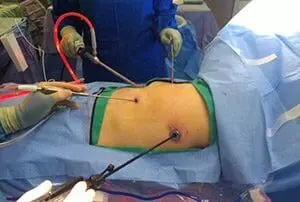
A research that was recently published looked at how Serratus posterior superior intercostal plane block (SPSIPB) affected patients having video-assisted thoracoscopic surgery (VATS) in terms of post-operative pain and total intravenous (IV) tramadol use. The main goal was to compare the numerical rating scale (NRS) ratings in the SPSIPB arm with the control arm after VATS in order to determine the impact of this block on post-operative analgesia. The quantity of tramadol and rescue analgesic (paracetamol) that the patients ingested, as well as their 24-hour post-operative follow-up, were secondary goals.
24 patients, ages 18 and above, with physical status I–III according to the American Society of Anesthesiologists (ASA), received wedge resection or biopsy utilising the uniportal VATS method. The SPSIPB group (n = 12) and the control group (n = 12) were the two randomly assigned groups of patients. Every patient in both groups was put under general anaesthesia, and those in the SPSIPB group had SPSIPB after the surgical closure but before the residual neuromuscular blockade was reversed.
The transducer probe was positioned transversely at the level of the spina scapula, and the patients were put in the lateral decubitus posture for SPSIPB. The 80 mm needle was advanced using the in-plane approach to ensure that no visible needle entered through the skin and subcutaneous tissue to target the third rib from the medial border of the scapula in the caudocranial direction. A test dosage of 1-2 mL saline was used to conduct hydro-dissection between the SPSM and the third rib after negative aspiration and the observation of no blood when the needle tip was inserted between the SPSM and the rib.
The purpose of the research was to examine the post-operative analgesia after VATS surgery in patients with spinal cord injuries (SPSIPB). Ten minutes before to skin closure, patients received 50 mg of dexketoprofen IV and 1 g of paracetamol IV. After that, the patients were put to sleep and neuromuscular reversal and extubation were carried out. The length of the procedure was noted, and the patients’ IV tramadol infusion was attached to a PCA pump. As a rescue analgesic, patients who had a numerical rating scale (NRS) score of >4 even with PCA were given 1 g of paracetamol intravenously. According to the research, the SPSIP group consistently had NRS ratings that were far lower than those of the control group.
With the exception of the 0–1st hour, the SPSIP group’s tramadol intake was consistently lower than that of the control group. In a 24-hour period, the SPSIP group consumed an average of 58.33 mg of tramadol, whereas the control group consumed 144.17 mg. Neither the SPSIP group nor any of the patients in the group required rescue analgesia during the 24-hour follow-up.
Regarding adverse effects, there were two patients in the control group who suffered from nausea whereas none of the SPSIPB group’s patients did. There were no instances of hemodynamic instability or pneumothorax in the SPSIPB or control groups.
According to the research, after video-assisted thoracoscopic surgery (VATS), Serratus posterior superior intercostal plane block (SPSIPB) may effectively relieve thoracic pain. The research discovered no appreciable variation in tramadol intake after post-operative SPSIPB and no need for rescue analgesics during the first 18 hours following surgery. The SPSIP group used far less paracetamol than the control group; in the final six hours, the control group’s dynamic NRS scores only dropped to around 4.
Nevertheless, the study has certain drawbacks, including a limited patient population and a dearth of research on sensory dermatomes. Additionally, if the patients had received varying amounts of local anaesthetic for comparison, the volume-dependent fluctuation of the SPSIPB’s analgesic effectiveness may have been made clear.
For post-operative analgesia after VATS procedures, paravertebral block (PVB) and erector spinae plane (ESP) block are often used. Because single-shot serratus anterior plane (SAP) blocks are simpler to apply and have a lower rate of problems, the current PROSPECT guideline suggests them as a backup choice. Due to its positioning, which avoids the danger of pneumothorax and targets the third rib, SPSIPB is regarded as a safe method. To get more conclusive results, nevertheless, further randomised clinical studies and comparisons with other blocks are required.
Reference –
Avci, Onur; Gundogdu, Oğuz; Balci, Fatih; Tekcan, Muhammed N.; Ozbey, Mahmut1. Efficacy of serratus posterior superior intercostal plane block (SPSIPB) on post-operative pain and total analgesic consumption in patients undergoing video-assisted thoracoscopic surgery (VATS): A double-blinded randomised controlled trial. Indian Journal of Anaesthesia 67(12):p 1116-1122, December 2023. | DOI: 10.4103/ija.ija_589_23
Powered by WPeMatico

Hyderabad: In a shocking incident, a 32-year-old paediatrician allegedly committed suicide at her house in the Masab Tank area on Monday following harassment and threats from a person who had been stalking her.
According to the police, the doctor was being stalked and harassed by a man whom she had met over social media last year. They said that the man was constantly harassing her and would intrude on her official meetings and threaten her against talking to other men.
It is believed that the harassment she suffered at the hands of the man has driven her to take this extreme step.
Also read- Karnataka Doctor Kills Self, Names Congress Leader In Suicide Note
As per the DC news report, her body was discovered by the building security guard who went to her room to inquire about her witnessing a heated argument between her and a man on the ground floor of the apartment building. They continued their arguments on the fourth floor.
After entering her room, the guard found the doctor dead and saw the man standing on the balcony. The security guard then immediately informed the police and the doctor’s husband. The couple had married in 2018 and had no children.
Her husband a software professional who was out of station rushed back home upon getting the shocking news.
It is unclear whether the husband was aware of the distress his wife was experiencing, but the victim’s brother informed the police that his sister had informed him about the harassment from the stalker.
Also read- Telangana PG Medico Commits Suicide By Injecting Self With Drug
Powered by WPeMatico
